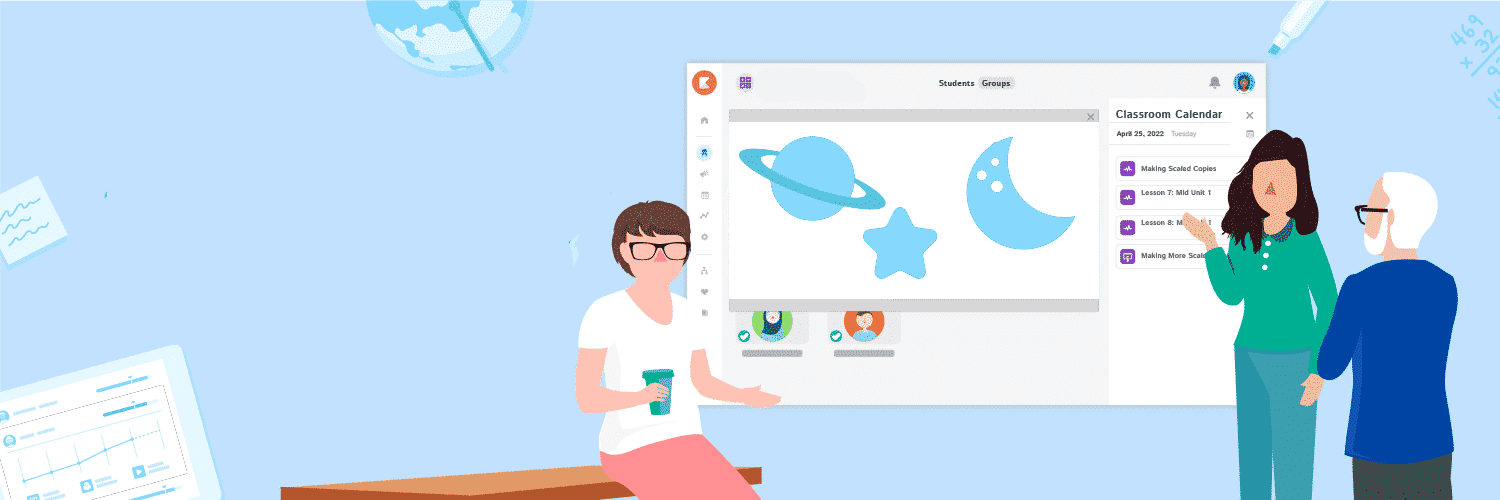
Zack Cronin
Used since at least the 1980s, the proven 5E Science Instructional Model has become the foundation for science curricula nationwide.
It includes five stages – engage, explore, explain, elaborate, and evaluate – all centered around a scientific phenomenon. Educators are empowered to build a sequence of learning experiences that connect existing and new science concepts with students’ own experiences as they discuss and apply their learning.
When educators can bring actual scientific phenomena into the classroom for students to observe, interact with, manipulate, and discuss, it makes the experience that much more powerful. It allows for developing inquisition skills, problem-solving capabilities, critical thinking, reasoning, logic, collaboration, and communication.
Phenomenon-based learning is a catalyst for sparking a lifelong love for learning and inquiry. By placing students at the forefront of their educational journey, fostering curiosity, and bridging educational gaps, this approach is transforming K-12 science education, preparing students to become the scientists, innovators, and critical thinkers of tomorrow. But how?
Phenomena-Based Science is Engaging
At the heart of phenomena-based learning is a student-centric philosophy. Instead of lecturing them on phenomena, it allows them to witness, explore, and engage.
Phenomena-based learning unfolds as a scientific adventure, encouraging students to become investigators of the world around them. The inquiry-based nature of this approach sparks curiosity and invites students to actively participate in the scientific process. Through asking questions, designing experiments, and analyzing data, students mimic the authentic practices of scientists. This not only deepens their understanding of scientific concepts but also fosters a love for exploration and discovery.
Instead of merely transferring information to young minds, this approach places students at the center of their educational journey. It allows them to use their own unique skills, experiences, and knowledge, providing a platform for them to actively participate in the learning process.
Phenomena-based science curriculums, like OpenStax and OpenSciEd use digital partners to provide students with experiential learning when physical experiments are not possible. These curriculums allow students to conduct experiments, work in laboratories, and even control telescopes across the world, all through virtual experiences.
This phenomena-centered approach not only imparts scientific knowledge but also cultivates critical thinking, problem-solving, and collaboration – essential skills for budding scientists and informed citizens.
Phenomena-Drive Learning Bridges Gaps in Science Education
One of the remarkable aspects of phenomena-based learning is its ability to bridge educational gaps. Research has shown that this approach is equally impactful in diverse socioeconomic settings.
in 2021 USC conducted a study of high school AP classes using a problem-based curriculum (phenomena-based curriculum’s non-science cousin).
It covered five different school districts and included 3,645 students, 50% of which were low-income. The students who were taught using a problem-based curriculum outperformed their traditional counterparts by 8% the first year and 10% the next, showing that as teachers learned and adapted to the material, they were able to support their students better.
Perhaps even more notably, the students tagged as low-income performed the same as their peers who were not, showing that problem-based curriculum is also equitable.
By grounding learning experiences in real-world phenomena, students from all backgrounds can connect with scientific concepts in a meaningful way. This inclusivity ensures that every child, regardless of their circumstances, has the opportunity to unlock their scientific potential.
Phenomena-Based Learning Prepares Today’s Students for Tomorrow’s Challenges.
Phenomena-based learning extends beyond textbooks and traditional classroom boundaries. By anchoring scientific concepts in real-world contexts, students experience authentic learning that can be applied beyond the walls of a classroom. This exposure prepares them for the challenges of the future, instilling a sense of relevance and application that lasts a lifetime.
A Gallup Education poll found that 87% of teachers and 77% of parents felt that learning methods that inspire creativity and encourage thinking are more impactful than traditional methods. Further, 59% of parents said it was important for their children to work on projects with real-world relevance.
Yet, only 26% of students reported that they have worked on projects that they feel have real-world use.
Phenomena-based learning, with its emphasis on critical thinking, collaboration, and problem-solving, equips students with the holistic skill set needed for the challenges that lie ahead. It nurtures a generation of learners who are not only academically proficient but also resilient and ready to contribute to a rapidly changing world.
These scientific experiences stay with students and help to inspire future scientists in a world where we currently need them.
Kiddom seamlessly connects the most critical aspects of teaching and learning on one platform.
For the first time, educators can share and manage digital curriculum, differentiate instruction, and assess student work in one place. Learners can take assessments online, see student performance data with the click of a button, and teachers have the insight and tools they need to create individual learning paths.
Ready to bring digital curriculum to your school or district?
Connect with us in a 15-minute meeting to learn more about available pre-packaged curriculum and assessments, and how the Kiddom education platform can support your learning community.